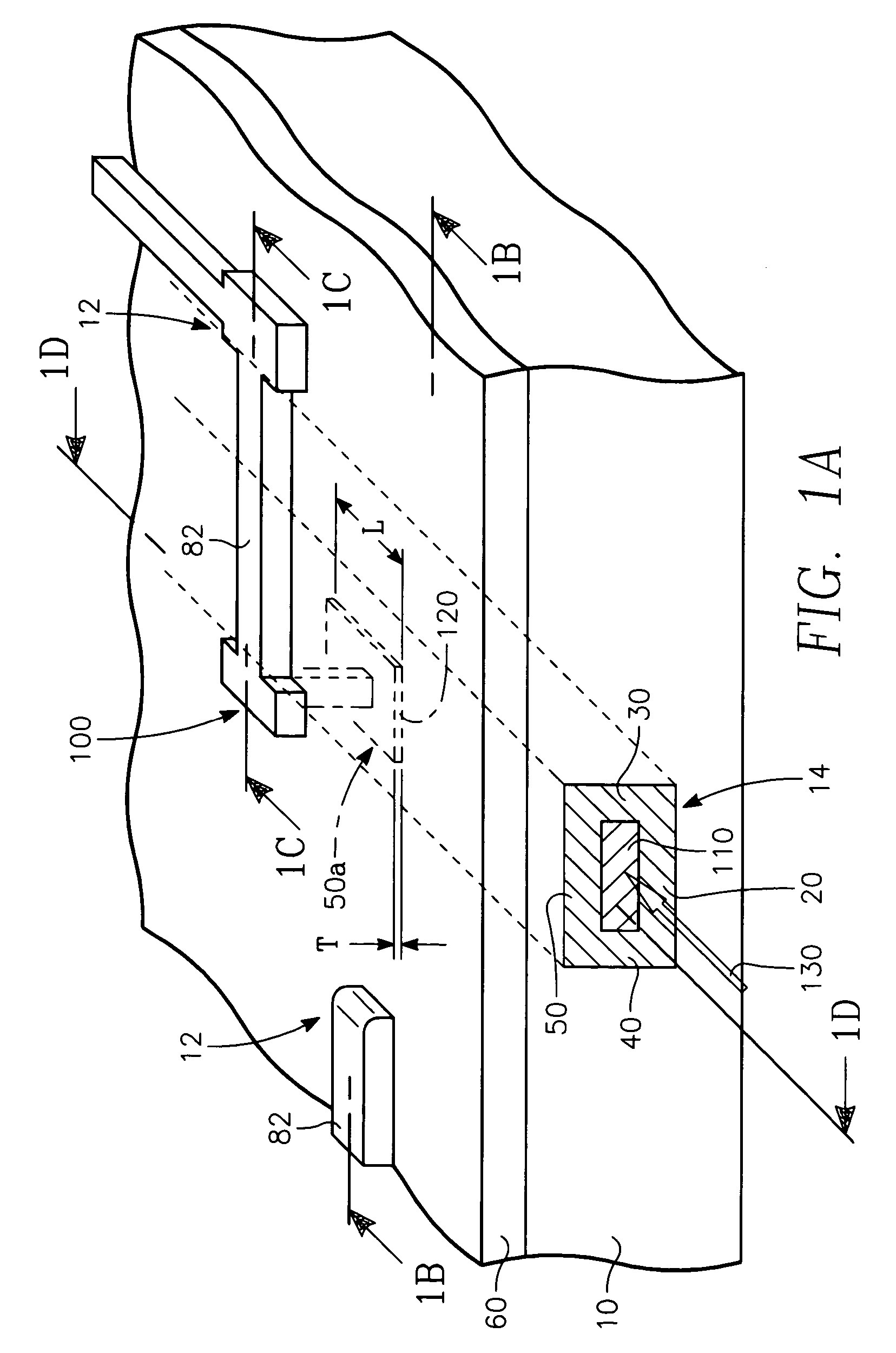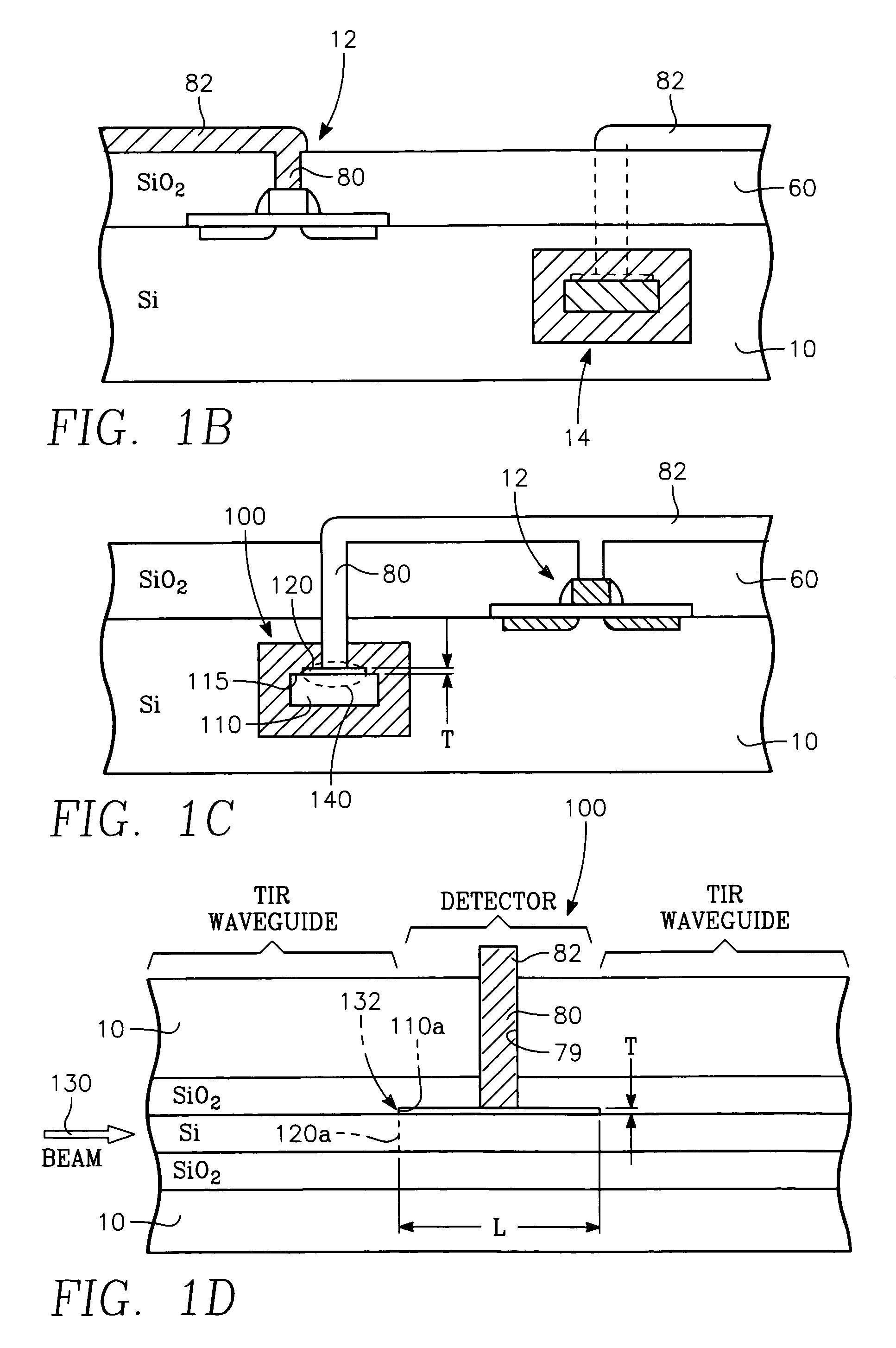Planar integrated circuit including a plasmon waveguide-fed Schottky barrier detector and transistors connected therewith
a technology of integrated circuits and transistors, which is applied in the direction of instruments, lighting and heating apparatus, optical elements, etc., can solve the problems of difficult inability to use schottky detectors for optical communication, and inability to achieve the optimization of photon absorption in schottky electrodes, etc., to achieve the effect of reducing power consumption and facilitating waveguide/detector structures
- Summary
- Abstract
- Description
- Claims
- Application Information
AI Technical Summary
Benefits of technology
Problems solved by technology
Method used
Image
Examples
Embodiment Construction
[0025]Referring to FIGS. 1A through FIGS. 1D, a VLSI integrated circuit having a planar structure is formed on a semiconductor substrate 10 including plural transistors 12 formed therein and a buried elongate optical waveguide 14 at least generally beneath the top surface of the semiconductor substrate 10. The semiconductor substrate 10 is typically a silicon wafer, although the substrate 10 may be a silicon layer formed on a semiconductor wafer. The waveguide 14 is a total internal reflection (TIR) waveguide. It consists of an elongate medium or semiconductor layer 110 surrounded on its four sides by a horizontal base layer 20 formed on the substrate 10, a pair of parallel elongate vertical wall layers 30, 40 extending up from the base layer 20, and a ceiling layer 50. The medium, semiconductor layer or core 110 has a different (e.g., higher) index of refraction than the surrounding walls / layers 20, 30, 40, 50. If the elongate core or medium 110 is a semiconductor such as silicon o...
PUM
 Login to View More
Login to View More Abstract
Description
Claims
Application Information
 Login to View More
Login to View More - R&D
- Intellectual Property
- Life Sciences
- Materials
- Tech Scout
- Unparalleled Data Quality
- Higher Quality Content
- 60% Fewer Hallucinations
Browse by: Latest US Patents, China's latest patents, Technical Efficacy Thesaurus, Application Domain, Technology Topic, Popular Technical Reports.
© 2025 PatSnap. All rights reserved.Legal|Privacy policy|Modern Slavery Act Transparency Statement|Sitemap|About US| Contact US: help@patsnap.com



